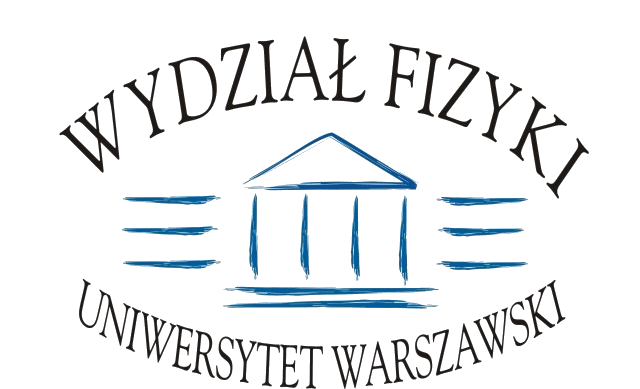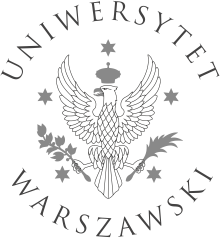Seminarium Teorii Oddziaływań Elementarnych
2006/2007 | 2007/2008 | 2008/2009 | 2009/2010 | 2010/2011 | 2011/2012 | 2012/2013 | 2013/2014 | 2014/2015 | 2015/2016 | 2016/2017
2015-11-30 (Poniedziałek)
Marcin Badziak (IFT UW)
Upper bounds on sparticle masses from muon g-2 and the Higgs mass
Supersymmetric explanation of the discrepancy betweenthe measurement of muon g-2 and its SM prediction puts strong upper bounds on the chargino and smuon masses. At the same time, experimental lower limits on the chargino and smuon masses, combined with the Higgs mass measurement, lead to an upper bound on the stop masses. I will discuss these upper bounds in MSSM and show in a model independent way that the discovery potential of the future lepton and hadron colliders should lead to the discovery of supersymmetry if it is responsible for the explanation of the muon g-2 anomaly.
2015-11-23 (Poniedziałek)
George Zoupanos (NTUA, Athens)
Quantum Reduction of Couplings with Applications on Finite Unified Theories and the MSSM
We apply the method of reduction of couplings in a Finite Unified Theory (FUT) and in the MSSM. The method consists on searching for renormalization group invariant relations among couplings of a renormalizable theory holding to all orders in perturbation theory. It has a remarkable predictive power since, at the unication scale, it leads to relations between gauge and Yukawa couplings in the dimensionless sectors and relations involving the trilinear terms and the Yukawa couplings, as well as a sum rule among the scalar masses and the unified gaugino mass in the soft breaking sector. In both the MSSM and the FUT model we predict the masses of the top and bottom quarks and the light Higgs in remarkable agreement with the experiment. Furthermore we also predict the masses of the other Higgses, as well as the supersymmetric spectrum, both being in very comfortable agreement with the LHC bounds on Higgs and supersymmetric particles.
2015-11-16 (Poniedziałek)
Janusz Rosiek (IFT UW)
Mass Insertions vs. Mass Eigenstates calculations in Flavor Physics
I discuss the relation between QFT amplitudes calculated in the"interaction" basis and "mass eigenstate" basis, especially importantfor flavor physics. I present and prove a theorem of matrix analysisallowing to algebraically translate an amplitude written in masseigenbasis into flavor mass insertions, without performingdiagrammatic calculations in the interaction basis. I also describeMassToMI Mathematica package automatizing such translation and discussits application to physical examples of neutron Electric Dipole Momentand Higgs boson decays in the MSSM.
2015-11-09 (Poniedziałek)
Jacek Wosiek (UJ)
Beyond Complex Langevin: from simple examples to positive representation of Feynman path integrals directly in Minkowski time
Stochastc quantization is a well known approach which replaces ensamble averages by averaging over a fictitious time of a suitable stochastic process. It was designed and proved for positive densities, i.e. real, euclidean actions. However Langevin process can be also defined for complex actions, raising expectations for statistical averaging over complex distributions. This has attracted a new wave of interest after recent reports of successful study of quantum chromodynamics at finite chemical potential. Nevertheless there is no proof of convergence in the complex case, and indeed the evidence for success is limited.
In this talk we will circumvent above problems by introducing additional variables and direct construction of corresponding (i.e. complex and positive) weights. As an application, the well known solution for a complex gaussian distribution will be generalized to arbitrary complex inverse dispersion parameter. This opens a way to construct positive representations of path integrals directly in Minkowski time as will be done in the second part of the talk. Then some applications to simple, classic quantum systems will be presented.
Finally a striking physical interpretation of the new structure will be suggested, albeit with due caution.
In this talk we will circumvent above problems by introducing additional variables and direct construction of corresponding (i.e. complex and positive) weights. As an application, the well known solution for a complex gaussian distribution will be generalized to arbitrary complex inverse dispersion parameter. This opens a way to construct positive representations of path integrals directly in Minkowski time as will be done in the second part of the talk. Then some applications to simple, classic quantum systems will be presented.
Finally a striking physical interpretation of the new structure will be suggested, albeit with due caution.
2015-11-02 (Poniedziałek)
Wojciech Kotlarski (IFT UW i Technische Universitatet Dresden)
MRSSM: Higgs boson mass at the 2-loop level, light singlet, dark matter and all that
In this talk I will present recent results of an analysis of supersymmetric model with an unbroken R-symmetry (rather than just R-parity). After model description I will come to the discussion of leading 2-loop corrections to the SM-like Higgs boson, with an emphasis on contributions from the SQCD sector. The second part of the talk will be the devoted to the description of the so called "light single scenario", in which the SM-like Higgs boson is not the lightest one. This setup in the MRSSM gives also natural dark matter candidate in the form of bino-singlino Dirac neutralino. I will discus viability of such a scenario.
2015-10-26 (Poniedziałek)
Maciej Nowak (Mark Kac Complex Systems Research Center, Jagiellonian University)
Spectral shock waves in large N QCD
We point out, that two most important phenomena in strong interactions, ie. strong-weak coupling transition and spontaneous breakdown of the chiral symmetry, require paramount rearrangement of the eigenvalues of the pertinent operators (Wilson loop and Dirac operator, respectively). In the large number of colors limit, this rearrangement seems to be universal and consistent with the behavior of some simple random matrix models. We conclude theorizing on the impact of the present and future random matrix studies on QCD.
2015-10-19 (Poniedziałek)
Andrey Katz (CERN and U. Geneve)
Low Scale Baryogenesis from Hidden Bubbles Collisions
2015-10-12 (Poniedziałek)
Leszek Sokołowski (UJ)
Is it possible to recover the correct theory of gravity from cosmology?
2015-10-05 (Poniedziałek)
Ulrich Nierste (KIT, Karlsruhe)
Two-body decays of D mesons: branching fractions and CP asymmetries
Charm physics probes flavour mixing among up-type quarks and thus has a unique role in flavour physics. But decay amplitudes of charmed hadrons are difficult to predict from first principles. Especially the theory predictions for CP asymmetries vary by orders of magnitude and give no clue of the expected size of the yet unmeasured CP violation in D decays. I present an analysis of D-meson decays into two pseudoscalar mesons, which exploits the approximate SU(3) flavour symmetry, and show how the Standard Model can be tested through correlations of CP asymmetries, which can be predicted in a better way than the individual CP asymmetries.
Stron 3 z 3






